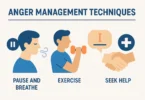In a world that constantly throws challenges, uncertainties, and obstacles our way, mental resilience is the superpower that enables individuals to bounce back, adapt, and thrive despite life’s difficulties. Whether it’s dealing with personal setbacks, navigating professional challenges, or simply surviving the stresses of daily life, mental resilience is what keeps us going when times get tough.
But what exactly is mental resilience? It’s more than just the ability to cope with stress—it’s the inner strength that allows us to persevere through adversity, learn from failures, and continue moving forward, no matter the hurdles. Resilience is a crucial aspect of mental health, helping us maintain emotional balance and stay motivated during trying times.
In this blog post, we’ll explore what mental resilience truly means, how to build it, and why it’s one of the most important qualities for anyone striving for personal growth and long-term success. By understanding and strengthening our resilience, we can face life’s challenges with a renewed sense of purpose, confidence, and grit.
Headlines
Understanding Mental Resilience
Key Strategies to Build Mental Resilience
- Strengthening Your Mindset
- Stress Management and Emotional Control
- 4-Techniques for Stress Management
- 4-Techniques for Emotional Control
Understanding Mental Resilience
What Is Mental Resilience?
Mental resilience is the ability to adapt, recover, and grow in the face of challenges, stress, and adversity. It is not about avoiding difficulties but rather developing the inner strength to navigate them effectively. People with high mental resilience don’t crumble under pressure; instead, they find ways to bounce back stronger.
At its core, mental resilience is a blend of emotional, psychological, and behavioral adaptability that helps individuals maintain stability and well-being, even in tough times. It involves both biological and learned responses, meaning that while some aspects of resilience may be innate, it is largely a skill that can be cultivated over time.
Key Characteristics of Mental Resilience:
- Emotional Regulation: Resilient individuals manage their emotions effectively, preventing overwhelming stress or anxiety from taking control.
- Cognitive Flexibility: The ability to shift perspectives and adapt thinking patterns to new circumstances.
- Self-Awareness: Understanding one’s own triggers, strengths, and limitations plays a key role in developing resilience.
- Optimism and Positive Outlook: Resilient people tend to focus on solutions rather than problems, which helps them overcome setbacks.
- Perseverance and Grit: A determination to keep going despite obstacles, setbacks, or failures.
- Strong Support Systems: Having reliable relationships and a sense of belonging enhances resilience and helps in coping with difficult situations.
Why Is Mental Resilience Important?
In today’s fast-paced world, challenges are inevitable—be it work-related stress, personal hardships, or unexpected life events. Mental resilience helps individuals:
- Handle stress and adversity without feeling overwhelmed.
- Maintain mental clarity and emotional stability under pressure.
- Improve problem-solving abilities by staying calm and rational.
- Foster long-term well-being by reducing the negative impact of stress on mental and physical health.
People with high mental resilience are often more confident, self-motivated, and adaptable, allowing them to face uncertainty with strength and learn from setbacks rather than being defeated by them.
The Importance of Mental Resilience
https://www.psychologytoday.com/us/basics/resilience
Articles and insights on mental resilience, offering advice on how to develop resilience in everyday life.
The Difference Between Mental Resilience and Emotional Resilience
While both terms are closely related, mental resilience is broader and includes the ability to adapt cognitively, emotionally, and behaviorally in the face of challenges. Emotional resilience, on the other hand, focuses more on managing emotions effectively during tough situations.
In essence, mental resilience is a skillset—one that can be developed through intentional practices such as cognitive training, mindfulness, and stress management techniques. By actively working on these areas, anyone can strengthen their ability to face life’s challenges with greater confidence and stability.
The Science Behind Resilience
Resilience isn’t just a personality trait—it’s deeply rooted in neuroscience and psychology. Understanding the biological and cognitive mechanisms behind resilience can help us develop strategies to strengthen it. Research shows that our brain, thoughts, and behaviors all play crucial roles in how we respond to stress, adversity, and setbacks.
The Role of the Brain in Resilience
Several key brain regions are involved in resilience, particularly those responsible for stress regulation, emotional control, and problem-solving:
The Prefrontal Cortex (PFC): The Brain’s Control Center
- The PFC helps regulate emotions, make rational decisions, and manage impulsive reactions to stress.
- A well-developed PFC allows individuals to stay calm under pressure and view problems logically rather than emotionally.
- Practices like mindfulness, meditation, and cognitive behavioral therapy (CBT) strengthen this area, making resilience a learned skill.
The Amygdala: The Brain’s Fear Center
- This part of the brain detects threats and activates the fight-or-flight response.
- In people with low resilience, the amygdala is overactive, causing heightened anxiety, fear, and stress responses.
- Resilience training helps regulate the amygdala’s response, preventing emotional overreactions to challenges.
The Hippocampus: The Memory Processor
- The hippocampus helps process past experiences and determine whether a situation is truly threatening.
- In resilient individuals, the hippocampus helps rationalize fears and learn from past adversities rather than becoming overwhelmed by them.
- Activities like journaling, self-reflection, and therapy enhance this function.
The Hypothalamic-Pituitary-Adrenal (HPA) Axis: The Stress Regulator
- The HPA axis controls the release of cortisol, the primary stress hormone.
- Chronic stress can overload this system, leading to anxiety, burnout, and emotional exhaustion.
- Resilient individuals have a well-balanced HPA axis, meaning they recover from stress more quickly.
- Stress management techniques like breathing exercises, physical activity, and social support help regulate this system.
Cognitive and Psychological Factors That Enhance Resilience
Beyond brain structures, psychological theories help explain why some people are naturally more resilient than others.
🧠 Cognitive Behavioral Therapy (CBT) and Thought Patterns
- CBT is a scientifically proven method to rewire negative thought patterns and build mental resilience.
- It helps individuals identify distorted thoughts (e.g., “I will never succeed”) and replace them with rational, positive beliefs (e.g., “I can learn from my mistakes and try again”).
💪 Neuroplasticity: The Brain’s Ability to Adapt
- The brain is not fixed—it continuously adapts to experiences, which means resilience can be trained and developed.
- Engaging in new challenges, learning skills, and practicing positive thinking can rewire the brain to handle adversity more effectively.
🌿 The Role of Mindfulness in Resilience
- Mindfulness-based practices help reduce emotional reactivity and improve stress management.
- Studies show that mindfulness increases gray matter density in the prefrontal cortex, strengthening cognitive control over emotions.
🔄 Post-Traumatic Growth: Finding Strength in Struggle
- Some individuals experience growth after adversity, known as post-traumatic growth.
- Instead of being broken by hardships, they develop new perspectives, deeper empathy, and stronger problem-solving skills.
How to Strengthen Your Brain for Better Resilience
The good news? Resilience is not fixed—you can train your brain to handle challenges better through these practices:
Mindfulness & Meditation: Helps regulate the amygdala, reducing stress responses.
Cognitive Training (CBT Techniques): Rewires thought patterns to promote positive coping strategies.
Exercise & Sleep: Strengthens brain function and regulates the stress response.
Social Support & Connection: Activates brain regions linked to emotional stability and happiness.
Learning & Adaptation: Challenging yourself with new experiences builds neuroplasticity.
By understanding the science behind resilience, we can take intentional steps to train our minds and develop a stronger, more adaptable mindset to face life’s challenges.
Key Strategies to Build Mental Resilience
Strengthening Your Mindset
A resilient mindset is the foundation of mental toughness. It helps you stay calm under pressure, recover from setbacks, and face challenges with confidence. Strengthening your mindset isn’t about ignoring difficulties but about developing the mental tools to navigate them effectively.
Here’s how you can train your mind to be more resilient:
Adopt a Growth Mindset
Your perspective on challenges plays a crucial role in your ability to overcome them. People with a fixed mindset believe that intelligence, skills, and abilities are set in stone—meaning that if they fail, they see it as proof of their limitations. On the other hand, people with a growth mindset see failures as learning opportunities.
✔ Fixed Mindset:
- “I’m just not good at this.”
- “I always fail, so there’s no point in trying.”
- “If I was truly talented, this would be easy.”
✔ Growth Mindset:
- “I can improve with practice and effort.”
- “Failure is a lesson, not a defeat.”
- “Challenges help me grow and adapt.”
How to Build a Growth Mindset:
- View challenges as opportunities rather than obstacles.
- Reframe failures as valuable learning experiences.
- Celebrate progress, not just results.
- Surround yourself with people who encourage learning and improvement.
Developing a growth mindset increases self-efficacy—the belief that you can influence your own success. The more you believe in your ability to adapt and grow, the stronger your resilience becomes.
Reframe Negative Thoughts
Your inner dialogue shapes your reality. When faced with adversity, resilient people don’t dwell on negativity; instead, they reframe challenges in a way that fuels action rather than fear.
🛑 Negative Thought Patterns That Weaken Resilience:
- Catastrophizing: Assuming the worst will happen (“This is a disaster; I’ll never recover”).
- All-or-Nothing Thinking: Viewing situations in extremes (“If I fail, I’m a complete failure”).
- Personalization: Blaming yourself for things beyond your control (“This is all my fault”).
✅ Resilient Thought Reframes:
- “This setback is temporary, and I can work through it.”
- “I’ve overcome tough situations before, and I can do it again.”
- “This challenge is teaching me something valuable.”
How to Practice Thought Reframing:
- Catch your negative thoughts – Notice when you’re spiraling into negativity.
- Challenge them – Ask, “Is this thought based on facts or fear?”
- Replace them with realistic, empowering statements – Shift to constructive thinking.
Over time, reframing negative thoughts rewires your brain to be more resilient. This is a technique used in Cognitive Behavioral Therapy (CBT) to help people manage stress and anxiety effectively.
Practice Self-Compassion
Many people are their own worst critics, but harsh self-judgment weakens resilience. Instead of beating yourself up over mistakes, practice self-compassion—treat yourself with the same kindness you’d offer a friend.
✔ Harsh Self-Talk:
- “I’m such a failure.”
- “I always mess things up.”
- “I’ll never be good enough.”
✔ Self-Compassionate Mindset:
- “I made a mistake, but that doesn’t define me.”
- “I am learning and improving every day.”
- “I deserve kindness, even when I struggle.”
Studies show that self-compassion reduces stress, improves mental resilience, and promotes emotional well-being. Simple practices like positive self-talk, journaling, and mindfulness can help you build a more resilient inner dialogue.
Strengthen Emotional Regulation
Mental resilience isn’t about suppressing emotions—it’s about managing them effectively. Emotional intelligence (EQ) plays a key role in resilience because it helps you stay in control of your reactions.
🧠 How to Strengthen Emotional Resilience:
Pause Before Reacting: Take a deep breath before responding to stress.
Label Your Emotions: Recognizing what you feel helps you process it more effectively.
Use Healthy Coping Mechanisms: Exercise, mindfulness, and journaling can help regulate emotions.
Seek Support: Talking to a trusted friend or therapist can help process difficult emotions.
By mastering emotional regulation, you gain the ability to face challenges without becoming overwhelmed, making you more mentally resilient.
Train Your Brain for Adaptability
Resilient individuals embrace change rather than resist it. Adaptability is key because life is full of unexpected twists and setbacks.
🛠 How to Build Mental Adaptability:
Stay Open-Minded: Be willing to adjust your perspective.
Accept Uncertainty: Instead of fearing the unknown, focus on what you can control.
Develop Problem-Solving Skills: Break challenges into smaller, manageable steps.
Keep Learning: Engaging in new experiences strengthens your ability to adjust to change.
Conclusion: Mindset Is the Foundation of Resilience
A strong mindset is essential for mental resilience. By cultivating a growth mindset, reframing negative thoughts, practicing self-compassion, regulating emotions, and staying adaptable, you train yourself to handle challenges more effectively.
Resilience isn’t about avoiding stress—it’s about becoming strong enough to face it head-on. The more you work on strengthening your mindset, the more confident, adaptable, and emotionally stable you become in the face of adversity.
Stress Management and Emotional Control
Mental resilience isn’t about avoiding stress—it’s about learning to manage stress effectively and maintain control over your emotions. Life is full of challenges, but how you respond to stress determines your ability to bounce back. By developing strong stress management skills and emotional control, you can prevent overwhelm, stay calm under pressure, and make better decisions even in difficult situations.
Understanding the Stress Response
When you face a stressful situation, your body activates its fight-or-flight response, releasing stress hormones like cortisol and adrenaline. This reaction is helpful in emergencies, but chronic stress can lead to exhaustion, anxiety, and emotional instability.
🔹 Common Signs of Poor Stress Management:
- Feeling constantly overwhelmed or anxious
- Difficulty concentrating and making decisions
- Physical symptoms like headaches, fatigue, or insomnia
- Emotional outbursts or increased irritability
Resilient individuals regulate their stress response rather than letting it control them. Here’s how to strengthen your ability to manage stress and emotions effectively.
4-Techniques for Stress Management
1. Mindfulness and Meditation
Practicing mindfulness helps you stay present and prevents your mind from spiraling into worry about the past or future. Studies show that mindfulness reduces stress by lowering cortisol levels and improving emotional regulation.
🧘♂️ How to Practice Mindfulness for Stress Relief:
Focus on your breath: Take deep, slow breaths to calm your nervous system.
Observe your thoughts: Acknowledge stress without judgment and let go of negative emotions.
Engage in mindful activities: Walking, journaling, or even eating can be mindful if done with full attention.
Even 5–10 minutes of mindfulness a day can strengthen your ability to stay calm under pressure.
2. Deep Breathing Exercises
Controlled breathing activates the parasympathetic nervous system, signaling to your body that it’s safe to relax.
🌬 Simple Breathing Technique (4-7-8 Method):
1️⃣ Inhale deeply through your nose for 4 seconds.
2️⃣ Hold your breath for 7 seconds.
3️⃣ Exhale slowly through your mouth for 8 seconds.
4️⃣ Repeat for 4–5 rounds to reduce stress instantly.
Deep breathing lowers heart rate, reduces anxiety, and enhances focus, making it a powerful tool for emotional control.
3. Physical Activity and Stress Release
Movement helps release built-up tension and regulates stress hormones. Exercise also increases endorphins, which improve mood and resilience.
🏃♀️ Best Stress-Relieving Activities:
Aerobic Exercise: Running, cycling, or swimming to burn off stress hormones.
Yoga: Combines movement with deep breathing for emotional balance.
Strength Training: Reduces mental tension by engaging the body physically.
Even a 10-minute walk can make a big difference in how you handle stress.
4. Prioritizing Rest and Sleep
Lack of sleep makes stress harder to manage and increases emotional reactivity. Sleep is essential for brain recovery, emotional regulation, and resilience.
😴 Tips for Better Sleep:
Stick to a consistent bedtime and wake-up time.
Avoid screens at least 30–60 minutes before bed.
Create a calming bedtime routine (reading, light stretching, meditation).
Getting 7–9 hours of quality sleep improves emotional stability and reduces stress reactivity.
4-Techniques for Emotional Control
Stress management is about handling external pressures, but emotional control is about responding to challenges without being overwhelmed.
1. Label Your Emotions
People who struggle with emotional control often react impulsively because they don’t fully understand what they’re feeling. Learning to identify and label emotions can help you process them more effectively.
📝 How to Practice Emotional Labeling:
- Instead of saying, “I’m upset,” identify the specific feeling: “I feel frustrated because I didn’t meet my deadline.”
- Instead of reacting impulsively, acknowledge: “I feel anxious, but I can handle this calmly.”
This simple shift reduces emotional intensity and helps you stay in control.
2. Cognitive Reframing: Changing Perspective
Your mindset determines how stress affects you. Instead of seeing stress as something negative, you can reframe it as a challenge to overcome.
🔄 Example of Reframing Stressful Situations:
🚫 Negative Thought: “This situation is ruining my day.”
✅ Reframed Thought: “This is difficult, but I can learn and grow from it.”
Resilient people don’t avoid stress—they use it as a tool for personal growth.
3. Delayed Reaction Technique
When emotions run high, reacting immediately can make things worse. A simple but powerful trick is to pause before responding.
⏳ How to Delay Emotional Reactions:
1️⃣ Take a deep breath before speaking.
2️⃣ Count to 10 if you feel overwhelmed.
3️⃣ Ask yourself: “How would my future self want me to handle this?”
By taking a moment to process emotions, you gain control over your responses instead of reacting impulsively.
4. Developing Emotional Intelligence (EQ)
Emotional intelligence is the ability to understand, manage, and express emotions effectively. High EQ is linked to better resilience, stronger relationships, and reduced stress.
🧠 How to Improve Emotional Intelligence:
Self-Awareness: Reflect on your emotional triggers and patterns.
Self-Regulation: Manage emotions rather than suppressing or ignoring them.
Empathy: Understand others’ emotions to build better connections.
Effective Communication: Express feelings clearly and calmly.
The more you develop emotional intelligence, the better you’ll handle stress and difficult emotions.
Building Long-Term Emotional Stability
Resilience isn’t just about short-term stress relief—it’s about building emotional strength that lasts.
Develop a Support System: Surround yourself with positive, supportive people.
Practice Gratitude: Focusing on what’s going well shifts your mindset away from stress.
Set Healthy Boundaries: Learn to say no to protect your time and energy.
Engage in Hobbies: Creative activities and relaxation help balance emotional health.
The more you train yourself to manage stress and emotions, the stronger your resilience will become.
Final Thoughts: Stress and Emotions Are Manageable
Managing stress and emotions isn’t about being unaffected by difficulties—it’s about developing healthy coping mechanisms so that you stay in control.
Stress is inevitable, but how you respond is a choice.
Emotional stability is a skill that can be strengthened over time.
Resilient individuals embrace challenges and adapt instead of breaking under pressure.
By practicing mindfulness, emotional regulation, and stress management techniques, you’ll develop the mental resilience needed to navigate life’s ups and downs with confidence.
Mental resilience is not just about enduring hardship—it’s about thriving through it. It’s about building emotional strength, learning from adversity, and growing stronger each time we face life’s challenges. By developing resilience, we don’t just survive—we thrive, adapt, and embrace life’s twists and turns with an open mind and unwavering determination.
The journey to becoming more resilient may not always be easy, but with the right mindset and strategies, anyone can cultivate the inner strength required to face life’s obstacles head-on. Whether you’re learning to manage stress, embrace change, or simply push through a tough time, mental resilience can empower you to live a more balanced, purposeful, and successful life.
So, the next time life throws a challenge your way, remember: Resilience is within you, and with every setback comes an opportunity to rise even stronger. Stay adaptable, stay persistent, and most importantly, stay resilient. Your growth and success are just around the corner.








Leave a Comment